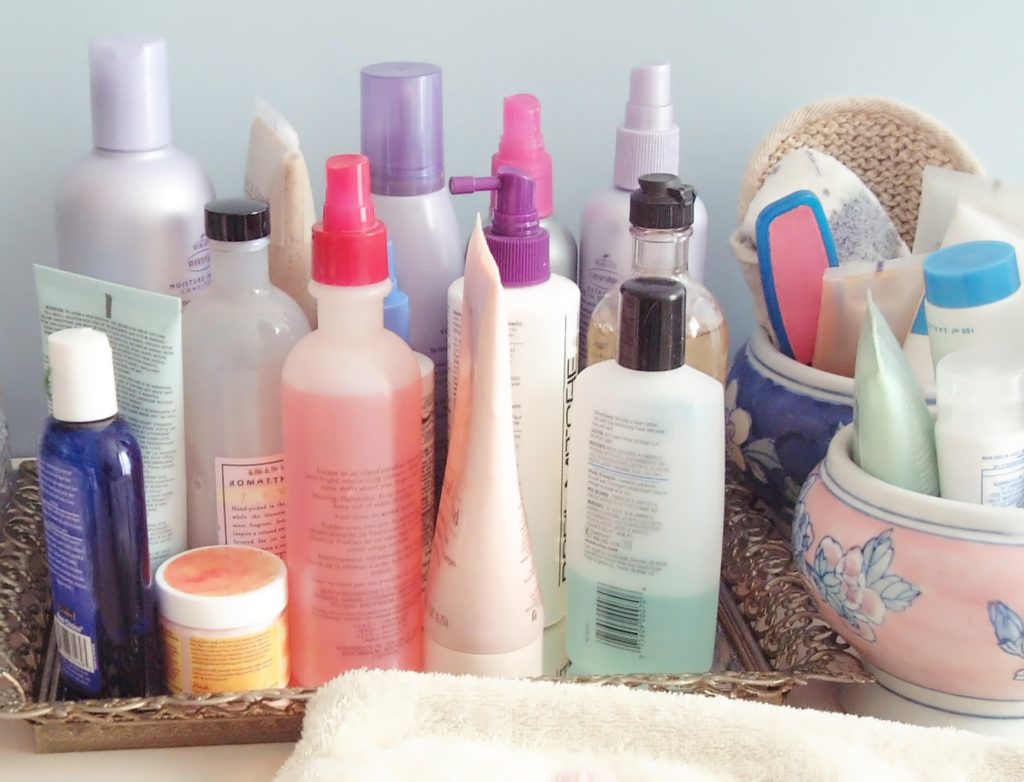The Journal of the National Cancer Institute (JNCI) has conducted a study connecting the use of chemical hair relaxers with an increased risk of developing uterine cancer. The study utilized data gathered by the Sister Study that involved over 30,000 women who reported their hair product use and medical status over the course of about eleven years.
It was found that those who used hair relaxers were at a more significant risk of suffering uterine cancer. There were 378 confirmed cases of uterine cancer, with the use of hair-straightening products increasing a woman’s risk of suffering uterine cancer. Black women were found to be at significant risk of suffering uterine cancer due to being more likely to use hair relaxers at a young age.

Endocrine-Disrupting Chemicals Can Cause Uterine Cancer
Uterine cancer caused by hair relaxers has been looked at recently due to increased uterine cancer cases in the United States. Cases of uterine cancer and mortality rates have increased over the past two decades, with 65,950 new cases and 12,550 deaths projected to occur in 2022.
It is a form of cancer that affects the uterus and can lead to symptoms such as abnormal vaginal bleeding, abdominal pain, and thin white or clear vaginal discharge. Risk factors for suffering uterine cancer include excess estrogen exposure and a hormonal imbalance of estrogen and progesterone. It has been speculated that products that contain endocrine-disrupting chemicals (EDCs) can alter hormonal actions and cause uterine cancer as a result.
Previous epidemiological studies have found a connection between hair product use and hormone-sensitive cancers like ovarian and breast cancer. Hair products have EDCs, such as formaldehyde, oxidized para-phenylenediamine, and 4-aminobiphenyl, that can affect hormone levels and cause cancer. The study by the Journal of the National Cancer Institute (JNCI) sought to find a connection between hair product use and suffering uterine cancer.
Who Was Involved in The Sister Study?
The Sister Study, an effort conducted by the National Institute of Environmental Health Sciences, gathered over 50,000 women to send medical and lifestyle information to learn how hormone-sensitive cancers develop. The participants were all cancer-free women between the ages of 35 and 74 that lived in the United States (or Puerto Rico) and had at least one sister who was diagnosed with breast cancer.
The JNCI used the information provided by this study to conduct its own study focusing on uterine cancer caused by hair relaxer products. The study group eventually consisted of 33,947 women who were participating in the Sister Study. Of those women, 85.6% were non-Hispanic/white, 7.4% were black/African American, 4.4% were Hispanic/Latina non-Black, and 3.5% were other races or ethnicities.
How Were Participants Assessed for Uterine Cancer Caused by Hair Relaxers?
At the beginning of the study, each participant answered a questionnaire assessing their hair product use. The participants would report whether they used hair products, such as hair dyes, bleach, highlights, pressers, relaxers, or straighteners, consistently in the previous twelve months. The responses included the frequency of hair product use from not using any products to using them consistently every couple of weeks. They also had to report any nonprofessional application of hair dye, straighteners, or relaxers.
The following is some of the other information collected before the study began:
- Height
- Body mass index
- Age
- Race and ethnicity
- Physical activity
- Whether they smoke
- Alcohol consumption
- Education
- Work history in beauty salons
Every year, each participant would be contacted to discuss any health changes or cancer developments, with more thorough assessments happening every two to three years. This information would be used to determine whether hair relaxer use led to uterine cancer.
The Study Found 378 Confirmed Cases of Uterine Cancer
Over the course of about eleven years, there were 378 cases of uterine cancer found in the Sister Study participants. These 378 suffered either endometrial cancer, uterine sarcoma, or other types of cancer of the uterus. The uterine cancer cases were confirmed by each woman’s medical records or death certificates with uterine cancer as an underlying cause of death.
There were 109 cases of uterine cancer that could not be verified through documentation and were discovered through self-report. Of the 262 confirmed cases of uterine cancer, 94.7% were confirmed as type one or two endometrial cancer, with the differences having to do with hormone sensitivity and clinical aggression.
Chemical Hair Straightener Use Connected to Uterine Cancer
According to the JMCI study, the women who participated and used hair relaxers were more likely to suffer from uterine cancer. These women who used hair relaxers at least four times a year had a higher adjusted hazard for uterine cancer, putting them at a greater risk of diagnosis.
The participants in the study who did not use hair relaxers consistently had an approximate 1.64% chance of developing uterine cancer by age 70. However, those that did use hair relaxers at least four times a year had a 4.80% chance of developing uterine cancer by 70. For every 85 users of hair relaxers (and every 42 frequent users), it was expected that another case of uterine cancer would arise. There was no clear correlation found between uterine cancer and the use of other hair products.
How Can Chemical Hair Straighteners Cause Uterine Cancer?
Many chemicals in hair-straightening products could be connected to causing uterine cancer. In the participants suffering from endometrial cancer, there were levels of parabens in endometrium tissues and phthalates in urine samples. Exposure to bisphenol A can alter the estrous cycle and has been connected to endometrial cancer diagnosis. Other chemicals in hair straighteners, such as diethanolamine, cyclosiloxanes, formaldehyde, and metals, are considered carcinogenic and could cause uterine cancer. No specific brands of hair products were noted, so it is yet unknown which specific chemicals cause uterine cancer.
How hair relaxers and straighteners are used could also be the source of uterine cancer. The scalp is one of the most absorbent parts of the body, with chemicals from hair relaxers possibly being absorbed that way. The hair-straightening products can also cause scalp lesions and burns that can result in exposure to carcinogens. If a woman had their hair blow blow-dried or ironed during a hair-relaxing treatment, chemicals could be released into the scalp and cause uterine cancer.
Black Women More At Risk of Uterine Cancer Due to Frequent Use of Hair Relaxers
The study did not observe differences in risk factors based on race, but black women may be more exposed to uterine cancer risk from hair relaxers due to being more likely to use these products. These products are used more by black women due to the pressure of eurocentric beauty standards that call for straighter hair. The prevalence of these products at a young age could expose black women to EDCs which can cause uterine cancer.

Contact Dolman Law Group for Help With Your Hair Relaxer Cancer Lawsuit
Dolman Law Group is a personal injury firm that has helped product liability victims recover compensation for damages. If you suffer from uterine cancer due to hair straightener use, you could file a product liability claim to pursue compensation for damages. Our product liability lawyers and mass torts attorneys have years of experience litigating product liability claims and negotiating settlements to help our clients recover compensation. A hair relaxer MDL may form after oral arguments in January of 2023, which our lawyers could help you get involved in. Our personalized legal counsel can put you in the best position to recover compensation for damages, such as medical bills, lost wages, and loss of consortium.